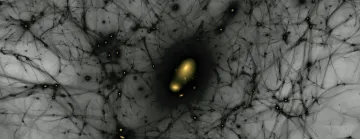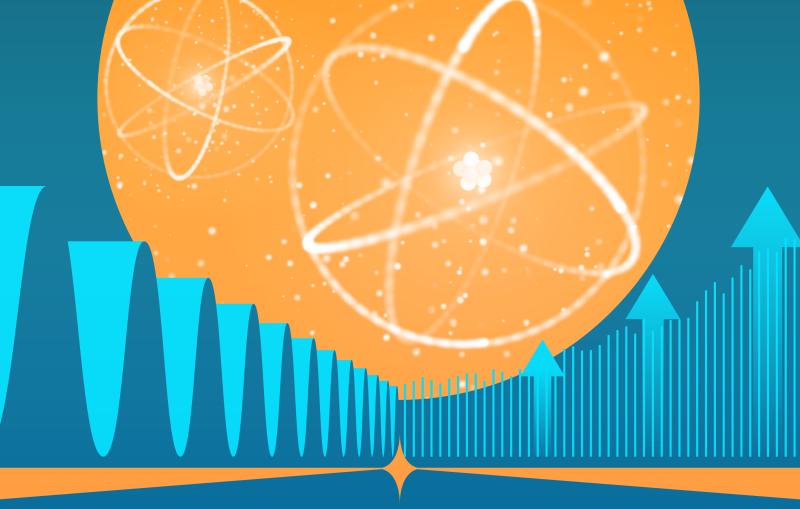Recommendations for U.S. government investments in particle physics include SLAC research priorities
A new report outlines suggestions for federal investments in research programs, the U.S. technical workforce and the technology and infrastructure needed for the next generation of transformative discoveries related to fundamental physics and the origin of the universe.
The High Energy Physics Advisory Panel (HEPAP) to the High Energy Physics program of the U.S. Department of Energy’s Office of Science and the National Science Foundation’s Division of Physics released a new, much anticipated Particle Physics Project Prioritization Panel (P5) report. It outlines particle physicists’ recommendations for research priorities for the next decade in a field whose projects, such as the construction of state-of-the-art particle accelerators and telescopes, can take contributions from thousands of scientists, billions of dollars of funding and years to decades to complete. Researchers at the DOE’s SLAC National Accelerator Laboratory play significant roles in several projects mentioned in the report.
The 2023 P5 report represents the major activity in the field of particle physics that delivers recommendations to U.S. funding agencies. This year’s report builds on the output of the 2021 Snowmass planning exercise – a process organized by the American Physical Society (APS)’s Division of Particles and Fields that convened particle physicists and cosmologists from around the world to outline research priorities.
“The P5 report will lay the foundation for a very bright future in the field,” said R. Sekhar Chivukula, 2023 chair of the APS Division of Particles and Fields and a distinguished professor of physics at the University of California, San Diego. “There are extraordinarily important scientific questions remaining in particle physics, which the U.S. particle physics community has both the capability and opportunity to help address, within our own facilities and as a member of the global high energy physics community.”
Daniel Akerib, a professor of particle physics and astrophysics at SLAC and interim associate lab director for fundamental physics, said, “SLAC’s program in high energy physics was very well-aligned with the previous P5 program, and the new report reaffirms many of the investments we’ve made over the last several years. It also captures many of the areas that SLAC scientists are excited about pursuing. In particular, high priority projects like the Legacy Survey of Space and Time with the Vera C. Rubin Observatory and the CMB-S4 cosmic microwave background project are highlighted for support in any budget scenario, while new areas in next-generation dark matter searches also received high priority recommendations among new projects. On the whole, it's exciting to see the panel show support for a number of fundamental physics projects that SLAC has invested effort in, including cosmology and accelerator-based particle physics."
Envisioning groundbreaking research from subatomic to cosmic scales
The report includes a range of budget-conscious recommendations for federal investments in research programs, the U.S. technical workforce, and the technology and infrastructure needed to realize the next generation of transformative discoveries related to fundamental physics and the origin of the universe.
For example, the report recommends continued support for the Deep Underground Neutrino Experiment (DUNE); for CMB-S4, a network of ground-based telescopes designed to observe the cosmic microwave background; for the Vera C. Rubin Observatory; and for the high-luminosity upgrade of the Large Hadron Collider (HL-LHC) at CERN in Europe. Other recommendations include support for a series of current and future projects related to cosmic evolution, neutrinos, dark matter and the search for new phenomena, covering large- and small-scale projects.
"We're happy to see the P5 report call out a number of projects, particularly in the areas of neutrino physics, the cosmic microwave background, dark matter and accelerators, that SLAC researchers are already playing key roles in," Akerib said. "We're looking forward to helping answer some of the most important questions in physics today."
Risa Wechsler, the Humanities and Sciences Professor and professor of physics and of particle physics and astrophysics and director of the Kavli Institute for Particle Astrophysics and Cosmology at SLAC and Stanford, said she was excited to see the breadth and potential of discovery opportunities through observations of the cosmos highlighted by the report, including continued support for Rubin Observatory. SLAC built the LSST Camera that will map the sky at the observatory – the largest digital camera ever built for astrophysics – and will co-lead Rubin operations. “I’m pleased to see the high priority given to Rubin as it starts operations – we are expecting many new discoveries from this project," Wechsler said. "We're also excited to see the report highlight the breadth of ways to learn about the dark matter that dominates the cosmos and the efforts to dramatically improve our understanding of what drives cosmic evolution."
Wechsler also said that she is pleased to see strong recommendations for strengthening ethical conduct, broadening participation in the field, supporting inclusive work environments, and communicating science to the public.
The U.S. participates in several major international scientific collaborations in high energy physics and cosmology, including CERN, which operates the Large Hadron Collider, where the Higgs boson was discovered in 2012. The P5 report recommends that the U.S. supports a significant in-kind contribution to a new international facility, the "Higgs factory," to further our understanding of the Higgs boson. It also recommends that the U.S. studies the possibility of hosting the next most-advanced particle collider facility, to reinforce the country’s leading role in international high energy physics for decades to come.
Editor’s note: This feature is based on a press release from the APS.
Contact
For questions or comments, contact the SLAC Office of Communications at communications@slac.stanford.edu.
About SLAC
SLAC National Accelerator Laboratory explores how the universe works at the biggest, smallest and fastest scales and invents powerful tools used by researchers around the globe. As world leaders in ultrafast science and bold explorers of the physics of the universe, we forge new ground in understanding our origins and building a healthier and more sustainable future. Our discovery and innovation help develop new materials and chemical processes and open unprecedented views of the cosmos and life’s most delicate machinery. Building on more than 60 years of visionary research, we help shape the future by advancing areas such as quantum technology, scientific computing and the development of next-generation accelerators.
SLAC is operated by Stanford University for the U.S. Department of Energy’s Office of Science. The Office of Science is the single largest supporter of basic research in the physical sciences in the United States and is working to address some of the most pressing challenges of our time.






